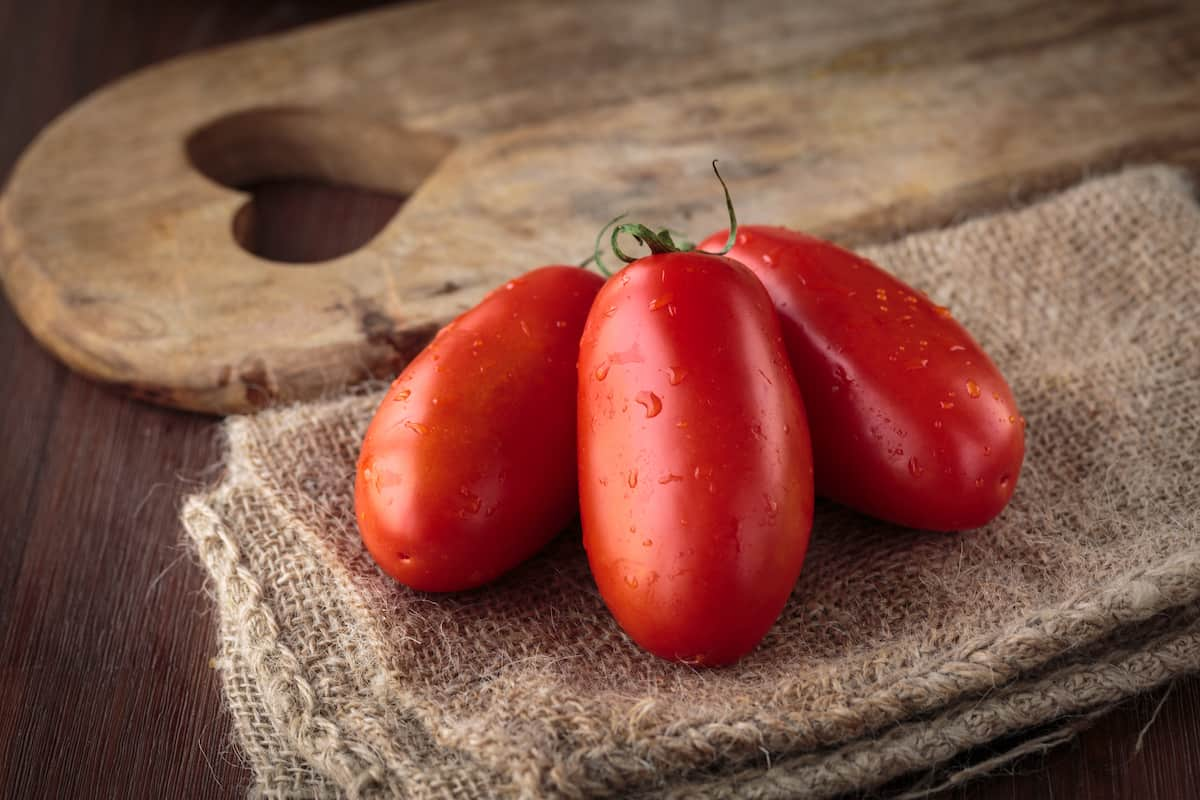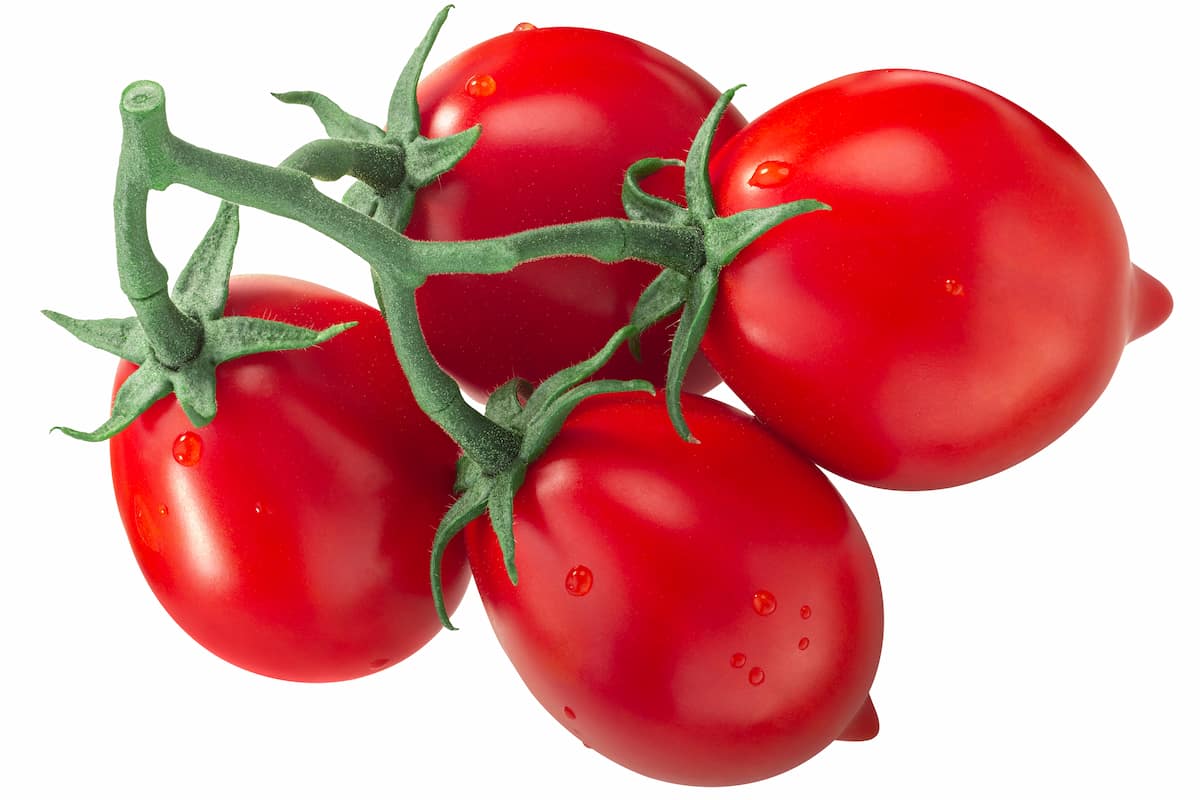Tomato farming is one of Italy’s most significant agricultural activities, with the country being one of the world’s leading producers of tomatoes. The favorable climate, fertile soils, and advanced farming techniques have made it possible to cultivate different tomato varieties throughout the year, making Italy one of the most significant exporters of processed tomato products globally.

Tomato Farming in Italy
Tomato Varieties Grown in Italy
Italy cultivates various tomato varieties, some of the most common being the San Marzano, Piennolo, and Pachino. San Marzano tomatoes are large, sweet, and meaty, with few seeds, making them ideal for making sauces. Piennolo tomatoes are small and oval-shaped, with a thick skin and a sweet flavor. They are often preserved and used to add flavor to pasta dishes. Pachino tomatoes are small, sweet, and juicy and ideal for salads and toppings for pizzas.
San Marzano Tomatoes
San Marzano tomatoes are widely considered the best tomatoes in the world thanks to their unique taste, texture, and versatility. They originate from the Campania area of Italy, specifically the rich soils of the Sarno River Valley at the foot of Mount Vesuvius. San Marzano tomatoes are typically harvested in late summer and early fall, and their peak ripeness makes them perfect for use in sauces, stews, and soups.
Piennolo Tomatoes
Piennolo tomatoes are native to the Campania region of Italy, and they are often called “pendulum” tomatoes because of their elongated shape. They are typically harvested in late summer and early fall and are often used to flavor pasta dishes, stews, and casseroles. Piennolo tomatoes are also used to produce canned tomatoes and tomato paste.
Pachino Tomatoes
Pachino tomatoes are native to the southeastern region of Sicily and are grown in sandy soils rich in nutrients. They are small, sweet, and juicy and ideal for salads and toppings for pizzas. Pachino tomatoes are harvested from late spring to early fall, and their peak ripeness makes them perfect for use in fresh dishes.
Tomato Farming Techniques in Italy
Tomato farming in Italy is done using both traditional and modern farming techniques. Greenhouses and drip irrigation systems allow tomato cultivation throughout the year. Greenhouses protect the tomato plants from harsh weather conditions, pests, and diseases, while drip irrigation systems ensure that the plants receive adequate water and nutrients.
Greenhouses
Since greenhouses shield tomato plants from pests and diseases, they are extensively employed in Italy’s tomato growing business. Greenhouses are also ideal for growing tomatoes in regions with unfavorable outdoor farming climates. Greenhouses allow farmers to control the temperature, humidity, and light conditions, ensuring that the tomato plants grow healthy and produce high yields.
Drip Irrigation
Drip irrigation is a modern farming technique in Italy’s tomato farming industry. It involves using pipes with tiny holes that deliver water and nutrients directly to the plant roots. Drip irrigation ensures that plants receive adequate water and nutrients while minimizing water wastage. This technique is particularly useful in regions where water is scarce, as it helps farmers to save water and reduce their farming costs.
In case you missed it: Frequently Asked Questions About Tomato Farming

Natural Fertilizers
Compost and manure, two natural fertilizers, are widely used in Italy to boost soil fertility and crop production. Compost and manure are rich in nutrients essential for plant growth and development. Using natural fertilizers also reduces the use of chemical fertilizers, which can harm the environment and human health. Applying natural fertilizers in tomato farming also reduces soil erosion, improves soil structure, and increases the soil’s water-holding capacity.
Crop Rotation
Crop rotation is another essential farming technique in Italy’s tomato farming industry. The practice of crop rotation helps to prevent soil degradation and the buildup of pests and diseases. It also helps to maintain soil fertility by allowing different crops to use different nutrients in the soil. Crop rotation reduces soil-borne diseases like Fusarium and Verticillium in tomato cultivation.
Harvesting and Processing
Tomatoes in Italy are harvested when they are ripe and at their peak flavor. They are then sorted and graded according to size, shape, and quality. The tomatoes are then processed into various products such as tomato paste, sauces, canned tomatoes, and sun-dried tomatoes. The processed tomatoes are packaged, sold locally, and exported to other countries.
The tomato processing industry significantly contributes to the Italian economy, with companies such as Cirio, Mutti, and Conserve Italia being major players. Processed tomato products are popular globally thanks to their high quality, rich taste, and versatility in different cuisines.
Challenges Facing Italy’s Tomato Farming Industry
Despite the many advantages Italy’s tomato farming industry enjoys, it faces various challenges that affect its productivity and profitability. Some of the main challenges facing Italy’s tomato farming industry include:
Climate Change
Climate change is a significant threat to Italy’s tomato farming industry, as it affects water availability and the incidence of pests and diseases. Extreme weather events like droughts and floods may cost farmers a lot of money and impair tomato plant development and productivity.
Pests and Diseases
Various pests and diseases affect tomato farming in Italy, which can cause significant losses to farmers. Frequent tomato diseases in Italy include tomato fruitworm, tomato hornworm, Fusarium wilt, Verticillium wilt, and bacterial canker. These pests and diseases can reduce the yield and quality of tomato plants and increase farming costs.
Competition from Other Countries
Italy’s tomato farming industry faces stiff competition from other countries, such as Spain, Greece, and Turkey, which also produce high-quality tomatoes. The competition from these countries has declined Italy’s tomato exports as buyers seek cheaper alternatives.
Labor Shortage
Tomato farming in Italy is labor-intensive, with most of the work being done manually. The industry faces a labor shortage, as many young people are not interested in agricultural work. There is a significant influx of migrant workers, which has led to labor exploitation and poor working conditions.
In case you missed it: How to Grow Greenhouse Tomatoes: A Step-By-Step Guide for Seed to Harvest

Conclusion
Tomato farming is a vital agricultural activity in Italy, with the country being one of the leading producers of tomatoes globally. The favorable climate, fertile soils, and advanced farming techniques have made it possible to cultivate different tomato varieties throughout the year. However, with proper management and investment, Italy’s tomato farming industry has the potential to continue thriving and contributing significantly to the country’s economy.
- Feed Your Flock for Less: Top 10 Tips to Save on Chicken Feed
- Ultimate Guide to Ossabaw Island Hog: Breeding, Raising, Diet, and Care
- Hatching Answers: The Top 10 Reasons Your Chickens Aren’t Laying Eggs
- Eggs and Economics: Breaking Down the Cost of Raising Backyard Chickens
- Defend Your Greens: Proven Methods to Keep Iguanas Out of Your Garden
- Ultimate Guide to Cinnamon Queen Chicken: A Comprehensive Guide for Beginners
- Ultimate Guide to California Tan Chicken: Breeding, Raising, Diet, Egg-Production and Care
- Ultimate Guide to Marsh Daisy Chicken: Breeding, Raising, Diet, and Care
- 10 Types of Chicken Farming Businesses You Can Start for Profits